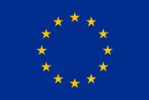Recent challenges faced by European welfare states have amplified the risk of poverty and social vulnerability, thus the importance of robust social safety nets, particularly Minimum Income Schemes (MIS), has been highlighted. The Council adopted the Council Recommendation on Adequate Minimum Income to support active inclusion, aiming to reform policies, prevent exclusion, and modernise the framework. However, while this is seen as a crucial step, organisations like the European Anti-Poverty Network (EAPN) and Eurodiaconia advocate for a Directive to ensure standardised MIS across the EU.
The toolkit designed by EAPN aims to guide organisations in advocating for improved MIS, with clear information about the Council Recommendation as a starting point amidst the broader context of Europe’s 2030 social targets. It also provides examples of good practices for advocacy strategy and engagement at EU and national level.
To effectively analyse Minimum Income Schemes (MIS) in a country, it’s crucial to evaluate their adequacy, accessibility, and enabling characteristics for impactful advocacy and campaigning efforts. Likewise, the guiding questions in the toolkit serve as a framework to comprehensively analyse different dimensions of the MIS in a country, covering aspects of accessibility, eligibility, discrimination, support, and future planning.
Some guiding questions are:
- Is discrimination present based on legal/residence status, gender identity, employment status, race, ethnicity, etc.?
- How burdensome or simple is the application process?
- What are the eligibility restrictions and benefit duration?
- Policies to address non-take-up rates?
- Is there a plan for MI to reach the poverty line by 2030?
For instance, assessing adequacy involves considering if the income provided ensures a dignified life. EAPN stresses the importance of setting benefit levels above the poverty threshold and employing national reference budgets to ensure the affordability of essential goods and services.
To analyse accessibility, consider the following key aspects: eligibility criteria (avoid negative conditionalities and discrimination), discrimination and stigmatisation (campaign to raise awareness), bureaucracy (simplify administrative procedures), digital divide (provide training to improve digital literacy and ensure access to information offline).
Some of the enabling characteristics include activation measures, working conditions of benefit providers, access to essential services, punitive conditionalities, and individualised support.
The principles and key elements for effective advocacy and its strategy outlined in the toolkit are:
- Community Engagement and Intersectionality (with people experiencing poverty)
- Mapping Barriers and Power Dynamics
- Advocacy Strategy Building
- Effective Engagement with Decision-Makers
- Strategic Planning and Goal Definition
- Narrative Building for Advocacy
- Drafting Key Messages and Dissemination
- Building Community and Alliances
- Risk Anticipation and Monitoring
- Assessment of Success and Continuous Improvement
Finally, the toolkit offers examples that emphasise the importance of restructuring schemes for adequacy, simplifying bureaucracy, advocating for inclusive policies, engaging with government bodies, collaborating with stakeholders, and persistent advocacy efforts to address the challenges associated with Minimum Income Schemes.
Read more about it here.



